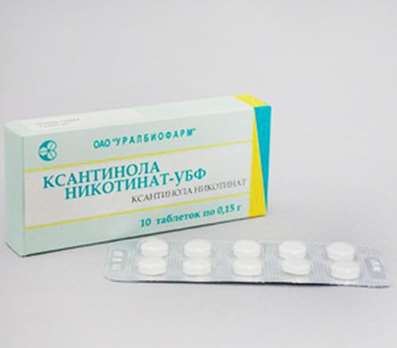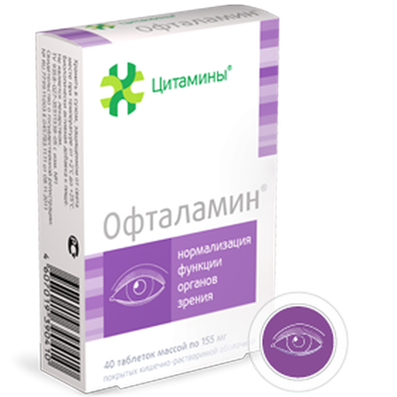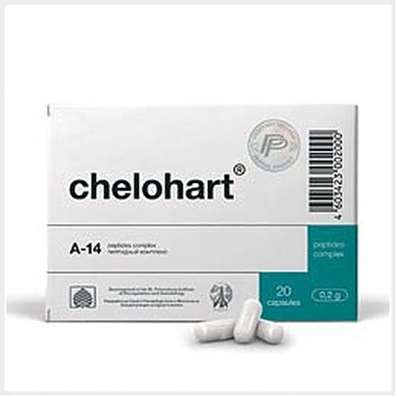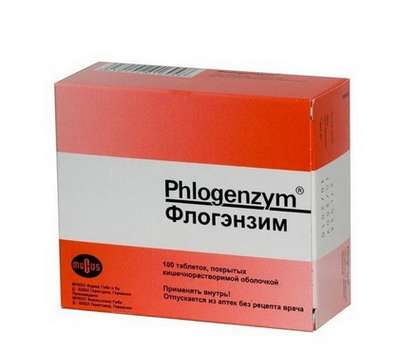Instruction for use: Katadolon forte
I want this, give me price
Active substance Flupirtine
ATX code N02BG07 Flupirtine
Pharmacological groups
Other non-narcotic analgesics, including non-steroidal and other anti-inflammatory drugs
Nosological classification (ICD-10)
R52.0 Acute pain
Acute pain syndrome, Acute pain syndrome with osteoarthritis, Acute pain syndrome of traumatic origin, Severe pain of a neurogenic nature, Severe pain, Pain syndrome at delivery
Composition
Tablets of prolonged action 1 tab.
active substance:
flupirtine maleate 400 mg
auxiliary substances: methyl methacrylate and ethyl acrylate copolymer (2: 1) - 22.5 mg; talc - 22.5 mg; calcium hydrogen phosphate dihydrate 38 mg; MCC - 59.74 mg; croscarmellose sodium - 34.95 mg; hypromellose - 8 mg; ferric iron oxide yellow (E172) 6.25 mg; silicon dioxide colloidal anhydrous - 2.06 mg; magnesium stearate - 6 mg
Description of dosage form
Tablets: oblong biconvex, even on one side and with risk on the other side, light yellow or yellow with light and dark impregnations.
pharmachologic effect
Pharmacological action - miorelaksiruyuschee, neuroprotective, analgesic central.
Pharmacodynamics
Flupirtine is a representative of medicines - Selective Neuronal Potassium Channel Opener (SNEPCO) - and refers to non-narcotic analgesics of central action that are not addictive and addictive.
Flupirtine activates G-protein-associated neural K + channels of internal rectification. The yield of K + ions causes stabilization of the resting potential and a decrease in the excitability of neuronal membranes. As a result, indirect inhibition of NMDA receptors (N-methyl-D-aspartate) occurs, since NMDA receptor blockade with Mg2 + ions persists until the cell membrane depolarization occurs (indirect NMDA receptor antagonism).
At therapeutically significant concentrations, flupirtine does not bind to alpha1, alpha2 receptors, 5-HT1 (5-hydroxytryptophan) -, 5-HT2-serotonin, dopamine, benzodiazepine, opioid, central m-and n-cholinergic receptors. Such a central action of flupirtine leads to the realization of three main effects.
Analgesic effect
Due to the selective opening of the potential of independent K + channels of neurons with the concomitant release of K + ions, the resting potential of the neuron is stabilized. The neuron becomes less irritable. The indirect antagonism of flupirtine against NMDA receptors protects neurons from the entry of Ca2 + ions. Thus, the sensitizing effect of increasing the intracellular concentration of Ca2 + ions is mitigated. Consequently, when the neuron is excited, inhibition of the transfer of ascending nociceptive impulses occurs.
Miorelaxing effect
The pharmacological effects described for the analgesic effect are functionally supported by increased absorption of Ca2 + ions by mitochondria, which occurs at therapeutically significant concentrations. The inhibition of impulse transmission to motor neurons and the corresponding effects on intercalary neurons lead to a decrease in muscle tension. Thus, this effect is manifested mainly in relation to local muscle spasms, and not in relation to the whole musculature as a whole.
Effect on chronization processes
The processes of chronization should be considered as the processes of neuronal conduction, due to the plasticity of the functions of the neurons. Through the induction of intracellular processes, the plasticity of the functions of the neurons creates the conditions for the realization of mechanisms such as "inflation", under which the response to each subsequent impulse increases. NMDA receptors (gene expression) are responsible for the launch of such changes. Indirect blockade of these receptors under the influence of flupirtine counteracts the feeling of pain intensification. Stabilization of the membrane potential changes the process and, thus, the sensitivity to pain decreases, and unfavorable conditions are created for clinically significant chronic pain. If the pain is already chronic, the stabilization of the membrane potential, facilitates the "erasing" of the pain memory and, thus, reduces the sensitivity to pain.
Pharmacokinetics
Absorption. After oral administration, approximately 90% of flupirtine is absorbed from the gastrointestinal tract, and after rectal administration about 70% of the administered dose is absorbed.
After taking flupirtine in doses of 50 to 300 mg of its concentration in the blood plasma have dose-dependent characteristics.
The pharmacokinetics of the preparation Katadolon® forte is due to the peculiarities of its dosage form: the rapidly released flupirtine fraction (100 mg) and the slowly released flupirtin fraction (300 mg).
With a single application of the drug Cmax flupirtine 0.8 μg / ml (0.4-1.5 μg / ml) was achieved after 2.4 hours, and with repeated administration (400 mg daily for 7 days) - after 1.9 h, with Cmax being 1 μg / ml (0.6-2.4 μg / ml).
Under the influence of food, there is a slight increase in absorption (AUC0-∞ 14.1 μg / ml-h compared to 10.7 μg / ml-h), as well as an increase in Cmax (1 μg / ml compared to 0.8 μg / ml ), and the time to reach Cmax increased (3.2 h compared to 2.4 h).
Metabolism. About 3/4 of the accepted dose of flupirtine is metabolized in the liver. Metabolite M1 (2-amino-3-acetamino-6- (4-fluoro) -benzylaminopyridine) is formed by metabolism as a result of hydrolysis of the urethane structure (reaction of phase I) and acetylation of the obtained amine (phase II reaction).
The analgesic effect of this metabolite is about a quarter of the analgesic effect of flupirtine, therefore it is also involved in the therapeutic effect of flupirtine.
Another metabolite is formed by oxidative cleavage (phase I reaction) of residual fluorobenzyl, followed by coupling (phase II reaction) of the resulting p-fluorobenzoic acid with glycine. This metabolite (M2) has no biological activity.
To date, there has been no research aimed at finding the isoenzyme, which is responsible for the oxidative (less significant) pathway of metabolism.
It is assumed that flupirtine has an insignificant potential for drug interaction.
Excretion. Most of the accepted dose of flupirtine (69%) is excreted by the kidneys. This part is characterized by the following: 27% - unchanged, 28% - metabolite M1 (acetyl metabolite), 12% - metabolite M2 (para-fluorohypuric acid); The remaining third consists of several secondary metabolites, the structure of which has not yet been studied.
A small part of the dose of flupirtine is excreted in the urine and feces.
T1 / 2 is about 15 hours; when eating, T1 / 2 is reduced. The main metabolite is displayed somewhat slower (T1 / 2 about 20 and 16 h, respectively).
In elderly patients (over 65 years) after repeated administration of the drug Katadolon forte according to 1 table. per day for 7 days against a background of increased distribution values, AUC increased from 0 to 24 hours (AUC0-24): 22.9 μg / ml · h compared to 16.8 μg / ml · h for a control group consisting of younger patients; In addition, in older patients there was an elongation of T1 / 2: 23.72 compared to 15.94 hours.
In addition, in patients with impaired renal function (Cl creatinine <30 ml / min), compared to patients in the control group, there was an increase in AUC0-24: 23.11 compared to 16.8 μg / ml · h, as well as an elongation of T1 / 2: 20.01 h compared with 15.94 h.
Indications of Katalolon® forte
Treatment of acute pain in adults.
The preparation Katadolon® forte should be used if treatment with other analgesics (for example, NSAIDs or weak opioid preparations) is contraindicated.
Contraindications
hypersensitivity to the active substance or any other component of the drug;
risk of development of hepatic encephalopathy and cholestasis, as. can develop encephalopathy or aggravate the course of already existing encephalopathy or ataxia;
severe myasthenia gravis due to the miorelaxing effect of flupirtine;
concomitant liver disease or alcoholism;
simultaneous application of flupirtine with other drugs that may have hepatotoxicity (see "Special instructions");
recently healed or existing ringing in the ears, due to the high risk of increased hepatic enzyme activity;
children's age till 18 years.
pregnancy and lactation
There is insufficient data on the use of flupirtine in pregnancy. In experimental animal studies, flupirtin showed reproductive toxicity, but not teratogenicity. The potential risk to humans is unknown. The preparation Katadolon forte should not be used during pregnancy, except when the benefit to the mother exceeds the potential risk to the fetus.
Flupirtine in a small amount penetrates into breast milk. In this regard, the drug Katadolon® Forte should not be used during breastfeeding, except when there is an extreme need for taking the drug. If you need to use the drug Katadolon® Forte during lactation, breastfeeding should be stopped.
Side effects
Undesirable reactions are classified according to frequency as follows: very often (≥1 / 10); often (≥1 / 100, but <1/10); infrequently (≥1 / 1000, but <1/100); rarely (≥1 / 10000, but <1/1000); very rarely (<1/10000); frequency is unknown (can not be estimated from available data).
From the hepatobiliary system: very often - an increase in the activity of hepatic transaminases; frequency unknown - hepatitis, hepatic insufficiency.
On the part of the immune system: infrequently - hypersensitivity to the drug, allergic reactions (in some cases accompanied by fever, skin rash, urticaria, skin itching).
From the side of metabolism: often - lack of appetite.
From the side of the psyche: often - sleep disturbance, depression, agitation / nervousness; infrequently - confused consciousness.
From the nervous system: often - dizziness, tremor, headache.
From the side of the organ of vision: infrequently - impaired vision.
From the gastrointestinal tract: often - heartburn, dyspepsia, nausea, vomiting, constipation, abdominal pain, dryness of the oral mucosa, flatulence, diarrhea.
From the skin and subcutaneous tissues: often - increased sweating.
Other: very often fatigue / weakness (in 15% of patients), especially at the beginning of treatment.
Undesirable reactions mainly depend on the dose of the drug (with the exception of allergic reactions). In many cases, they disappear by themselves as they take place or after the end of treatment.
In order to obtain new information on the safety of the drug, Katadolon® forte is subject to additional monitoring by medical personnel. It is advisable to report each case of an undesirable reaction that occurred with the use of the preparation Katadolon® forte. This allows you to constantly monitor the benefit / risk ratio of the drug.
Interaction
Strengthens the effect of alcohol, sedatives and muscle relaxants.
Due to the fact that flupirtine binds to blood plasma proteins to a large extent, it is likely that other drugs used concomitantly with flupirtine can be displaced from the bond with the plasma protein. As a result of the in vitro study of the interaction of flupirtine with warfarin, diazepam, acetylsalicylic acid, benzylpenicillin, digoxin, glibenclamide, propranolol, clonidine, it was found that only after interaction with warfarin and diazepam, the displacement of the latter from the bond with the plasma protein can reach such a degree that it is not ruled out that the effect of these drugs increases.
With the simultaneous use of flupirtine and indirect anticoagulants - coumarin derivatives (warfarin) - regular monitoring of the prothrombin index is recommended in order to timely correct the dose of indirect anticoagulants.
There are no data on the interaction with other anticoagulant drugs (including acetylsalicylic acid).
It should avoid the simultaneous use of flupirtine with drugs that can affect liver function. Combined use of flupirtine and drugs containing paracetamol and carbamazepine should be avoided.
Dosing and Administration
Inside, do not chew the tablet and squeezed a sufficient amount of liquid (preferably water).
By 400 mg (1 table) once a day. This dose is a daily dose. If this dose can not have a sufficient analgesic effect, you can use capsadol ® with a larger daily dose. Flupirtine should be given as short a period of time as necessary to achieve adequate analgesia. Duration of treatment should not exceed 2 weeks.
Elderly patients (over 65 years of age) and patients with impaired renal function of severe severity. The initial dose is 200 mg (1/2 table) once a day. Depending on the intensity of pain and tolerability, the dose can be increased to 400 mg (1 table) once a day. In patients with severe renal dysfunction, the maximum daily dose should not exceed 400 mg.
If it is necessary to use the drug in a higher dose, patients should be under the supervision of a doctor.
Patients with hypoalbuminemia. The preparation Katadolon® forte is not recommended for patients with hypoalbuminaemia, as clinical studies in patients of this group have not been performed.
Children. The safety and effectiveness of flupirtine in children and adolescents is not established. The drug Katadolon® Forte should not be used in children and adolescents under 18 years of age.
Overdose
There are reports of single cases of overdose with suicidal intentions. At the same time taking a dose of 5 g flupirtine caused the following symptoms: nausea, tachycardia, abnormal fatigue, tearfulness, dizziness, premarrowment, loss of consciousness, dryness of the oral mucosa.
After the induction of vomiting or the use of forced diuresis, the reception of activated carbon and the introduction of electrolytes, the state of health was restored within 6-12 hours. No life-threatening conditions were reported.
Animal studies have shown that an overdose can lead to CNS disorders, as well as manifestations of hepatotoxicity by the type of enhancement of metabolic disorders in the liver.
Treatment: symptomatic. The specific antidote of the drug is unknown.
special instructions
In patients with impaired renal function, the concentration of creatinine in the blood plasma should be monitored.
In patients over 65 years of age or with signs of severe renal failure, dose adjustment is required.
During treatment with the drug Kadadol® forte, once a week, the liver function status should be monitored. when flupirtin is used, an increase in hepatic transaminase activity, hepatitis and hepatic insufficiency may occur.
If the results of a liver test are abnormal or there are clinical symptoms that indicate liver damage, then the use of the drug Katadolon® forte should be discontinued.
Patients should be cautioned that during treatment with the Catodolon® Fort drug, attention should be paid to any symptoms of liver damage (eg, lack of appetite, nausea, vomiting, abdominal pain, weakness, darkening of the urine, icterus of the skin, itchy skin). If these symptoms occur, you should stop taking the drug Katadolon® Fort and urgently seek medical attention.
The preparation Katadolon® forte is not recommended for patients with hypoalbuminemia.
In the treatment of flupirtin, false positive reactions of the test with diagnostic strips for bilirubin, urobilinogen and protein in the urine are possible.
A similar reaction is possible with a quantitative determination of the concentration of bilirubin in the blood plasma. When applying the drug in some cases, the color of urine can be marked green, which is not a clinical sign of any pathology.
This drug is subject to additional monitoring. This will quickly reveal new safety information. Medical workers should report all suspected adverse reactions.
Influence on the ability to drive vehicles and mechanisms. Katadolon® forte can affect the concentration of attention and the speed of psychomotor reactions of a person, even if used in accordance with the instructions for the use of the drug.
Patients experiencing drowsiness or dizziness during therapy with the drug Katadolon® forte should refrain from administering vehicles and mechanisms.
With simultaneous application with alcohol, it is possible to increase the negative effect on the speed of psychomotor reactions.
Form of issue
Long-acting tablets, 400 mg. In a blister of PVC / aluminum foil, 7 pcs. 1 bl. in a cardboard box.
In a blister of PVC / aluminum foil, 10 pcs. 2 bl. in a cardboard box.
In a blister of PVC / aluminum foil, 14 pcs. 1, 3 or 6 bl. in a cardboard box.
Conditions of leave from pharmacies
On prescription.
storage Conditions
In the dark place at a temperature of no higher than 25 ° C.
Keep out of the reach of children.
Shelf life
3 years.
Do not use after the expiry date printed on the package.

 Cart
Cart





